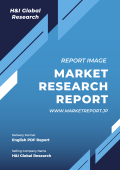| 【英語タイトル】Food Certification Market - Growth, Trends, Covid-19 Impact, and Forecasts (2023 - 2028)
|
 | ・商品コード:MOR23AP022
・発行会社(調査会社):Mordor Intelligence
・発行日:2023年1月23日
・ページ数:110
・レポート言語:英語
・レポート形式:PDF
・納品方法:Eメール(受注後2-3営業日)
・調査対象地域:アメリカ、カナダ、メキシコ、イギリス、ドイツ、フランス、ロシア、イタリア、スペイン、インド、中国、日本、オーストラリア、ブラジル、アルゼンチン、南アフリカ、サウジアラビア
・産業分野:食品
|
◆販売価格オプション
(消費税別)
※販売価格オプションの説明
※お支払金額:換算金額(日本円)+消費税
※納期:即日〜2営業日(3日以上かかる場合は別途表記又はご連絡)
※お支払方法:納品日+5日以内に請求書を発行・送付(請求書発行日より2ヶ月以内に銀行振込、振込先:三菱UFJ銀行/H&Iグローバルリサーチ株式会社、支払期限と方法は調整可能)
|
❖ レポートの概要 ❖
Mordor Intelligence社は、世界の食品認証市場規模が予測期間中(2022年-2027年)に年平均5.9%成長すると予想しています。本調査資料では、食品認証の世界市場を広く調査・分析し、イントロダクション、調査手法、エグゼクティブサマリー、市場動向、エンドユーザー別(肉・鶏肉・魚介類製品、乳製品、飲料、ベーカリー・製菓、その他)分析、種類別(ISO 22000食品安全マネジメントシステム、BRCGS、ハラール認証、GMP+/FSA、その他)分析、地域別(アメリカ、カナダ、メキシコ、イギリス、ドイツ、フランス、ロシア、イタリア、スペイン、インド、中国、日本、オーストラリア、ブラジル、アルゼンチン、南アフリカ、サウジアラビア)分析、競争状況、市場機会・将来動向、新型コロナウイルス感染症の影響などの項目を記載しています。なお、こちらの資料には、DEKRA e.V.、Intertek Group PLC、SGS SA、Bureau Veritas、Eurofins、NSF International、BSI Group、GFSI、Lloyd's Register Quality Assurance Limited、SCS Global Servicesなどの企業情報が含まれています。
・イントロダクション
・調査手法
・エグゼクティブサマリー
・市場動向
・世界の食品認証市場規模:エンドユーザー別
- 肉・鶏肉・魚介類製品における市場規模
- 乳製品における市場規模
- 飲料における市場規模
- ベーカリー・製菓における市場規模
- その他エンドユーザーにおける市場規模
・世界の食品認証市場規模:種類別
- ISO 22000食品安全マネジメントシステムの市場規模
- BRCGSの市場規模
- ハラール認証の市場規模
- GMP+/FSAの市場規模
- その他食品認証の市場規模
・世界の食品認証市場規模:地域別
- 北米の食品認証市場規模
アメリカの食品認証市場規模
カナダの食品認証市場規模
メキシコの食品認証市場規模
…
- ヨーロッパの食品認証市場規模
イギリスの食品認証市場規模
ドイツの食品認証市場規模
フランスの食品認証市場規模
…
- アジア太平洋の食品認証市場規模
インドの食品認証市場規模
中国の食品認証市場規模
日本の食品認証市場規模
…
- 南米/中東の食品認証市場規模
ブラジルの食品認証市場規模
アルゼンチンの食品認証市場規模
南アフリカの食品認証市場規模
…
・競争状況
・市場機会・将来動向
・新型コロナウイルス感染症の影響 |
The food certification market is projected to record a CAGR of 5.9 during the forecast period (2022-2027).
The COVID-19 crisis has significantly affected the market. This was due to the rising consciousness about the food and its quality among the consumers. During the pandemic, there was a change in the buying behavior among the consumers. The consumers were more focused on the types of food they were consuming and were also mostly preferring the food products that were properly labeled. The properly labeled food products and the food companies certified by various agencies play a vital role in the consumer’s preferences because of the food safety these products carry. Bureau Veritas, which is one of the major players in this industry, estimated an organic growth in fiscal 2021 in marine-based food products. The company had a growth of 8.7% in operation compared to the pre-pandemic situation.
The major factors that are expected to drive the growth of the food certification market during the forecast period include increasing consumer awareness about certified food products, growing demand for processed meat products certification, and the rising prevalence of foodborne illness.
The rising concerns about artificial products around the world are also driving the market significantly.
Food Certification Market Trends
Rising Awareness about Global Standards and Food Safety
Global standards are developed, adopted, and identified in several ways. For instance, they are contributing to market growth and even incorporating the protection of the environment, consumer health, and public safety of workers. The standards and regulations have started playing a vital role with an increase in private equity firms, and in turn, the global standard paradigm is evolving gradually. According to a survey conducted by ISO, in order to compile the number of valid certifications issued by certification bodies (accredited by members of the International Accreditation Forum), ISO 14001 (environmental management) grew by 8%, outpacing the threshold of 3,00,000 certificates, while 4,200 organizations have been certified to the new quality management ISO 9001:2015, immediately after three months from the published date. Thus, the globalization of standards is driving the overall market studied, and also, the training and inspection market.
North America is the Largest Market
In the North American region, the certification bodies, via follow-up and thorough audits, make sure that the companies engaged in food and alcohol production follow adequate food management processes. According to the Department of Agriculture of the United States (USDA), strict regulatory norms force manufacturers to comply with the regulations and continue to drive the market. The food industry is profoundly impacted by new FSMA rules and consumers demand greater transparency when it comes to food consumption. This is expected to drive the demand for food certification. The United States led the North American market, owing to the growing health consciousness and consumer awareness of the side effects of adulterated food products in the region. Somerdale International, the leading importer of British cheeses and dairy products to the United States, has launched the first, fully-accredited, and non-GMO British Cheddar. The new “Westminster Sharp” has been accredited as non-GMO by NSF International.
Food Certification Market Competitor Analysis
The market studied is a mature market. This is due to the presence of domestic and international players in the segment. Some of the major players in this market are Bureau Veritas, Eurofins Scientific, SCS Global Services, GFSI, and NSF. Most companies are actively involved in mergers and acquisitions, owing to globalization, and the leading global companies have a considerable share within the industry. The strategy behind mergers and acquisitions is also enabling these top players to sustain dominance over other regional players in the industry.
Additional Benefits:
- The market estimate (ME) sheet in Excel format
- 3 months of analyst support
1 INTRODUCTION
1.1 Study Assumptions and Market Definition
1.2 Scope of the Study
2 RESEARCH METHODOLOGY
3 EXECUTIVE SUMMARY
4 MARKET DYNAMICS
4.1 Market Drivers
4.2 Market Restraints
4.3 Porter’s Five Forces Analysis
4.3.1 Threat of New Entrants
4.3.2 Bargaining Power of Buyers/Consumers
4.3.3 Bargaining Power of Suppliers
4.3.4 Threat of Substitute Products
4.3.5 Intensity of Competitive Rivalry
5 MARKET SEGMENTATION
5.1 By End-user Industry
5.1.1 Meat, Poultry, and Seafood Products
5.1.2 Dairy Products
5.1.3 Infant Food
5.1.4 Beverages
5.1.5 Bakery and Confectionery Products
5.1.6 Other End-user Industries
5.2 By Type
5.2.1 ISO 22000 – Food Safety Management System
5.2.2 BRCGS
5.2.3 Halal certification
5.2.4 GMP+/FSA
5.2.5 Other Certifications
5.3 Geography
5.3.1 North America
5.3.1.1 United States
5.3.1.2 Canada
5.3.1.3 Mexico
5.3.1.4 Rest of North America
5.3.2 Europe
5.3.2.1 United Kingdom
5.3.2.2 Germany
5.3.2.3 France
5.3.2.4 Russia
5.3.2.5 Italy
5.3.2.6 Spain
5.3.2.7 Rest of Europe
5.3.3 Asia-Pacific
5.3.3.1 India
5.3.3.2 China
5.3.3.3 Japan
5.3.3.4 Australia
5.3.3.5 Rest of Asia-Pacific
5.3.4 South America
5.3.4.1 Brazil
5.3.4.2 Argentina
5.3.4.3 Rest of South America
5.3.5 Middle East & Africa
5.3.5.1 South Africa
5.3.5.2 Saudi Arabia
5.3.5.3 Rest of Middle East & Africa
6 COMPETITIVE LANDSCAPE
6.1 Market Share Analysis
6.2 Strategies Adopted by Players
6.3 Most Active Companies
6.4 Company Profiles
6.4.1 DEKRA e.V.
6.4.2 Intertek Group PLC
6.4.3 SGS SA
6.4.4 Bureau Veritas
6.4.5 Eurofins
6.4.6 NSF International
6.4.7 BSI Group
6.4.8 GFSI
6.4.9 Lloyd’s Register Quality Assurance Limited
6.4.10 SCS Global Services
7 MARKET OPPORTUNITIES AND FUTURE TRENDS
8 IMPACT OF COVID-19 ON THE MARKET











